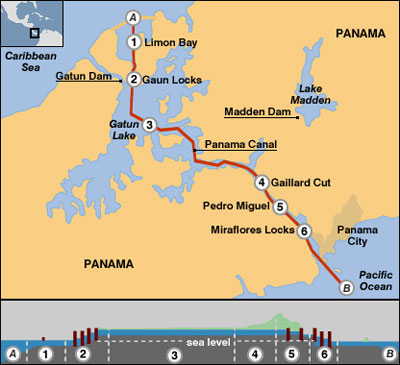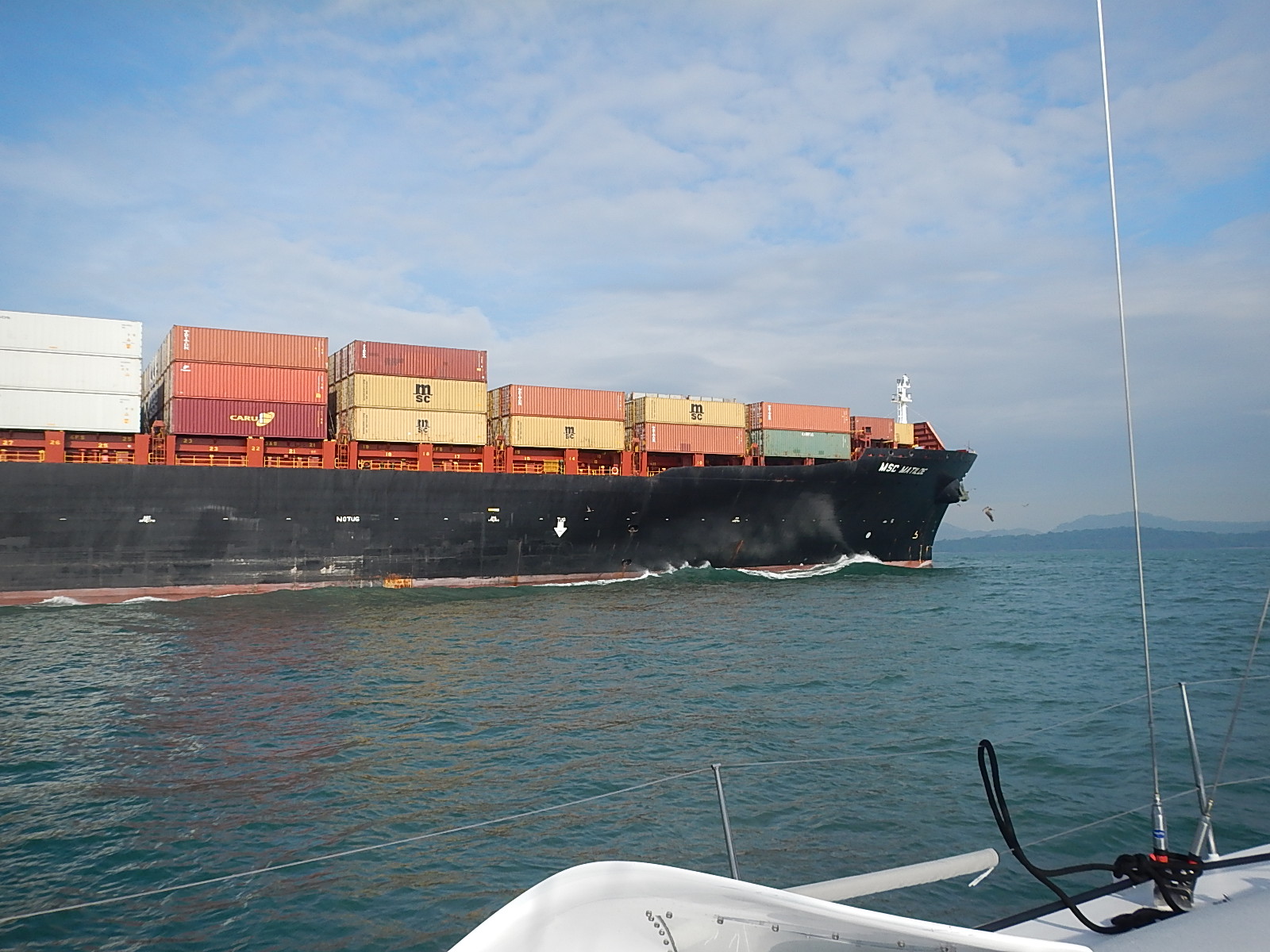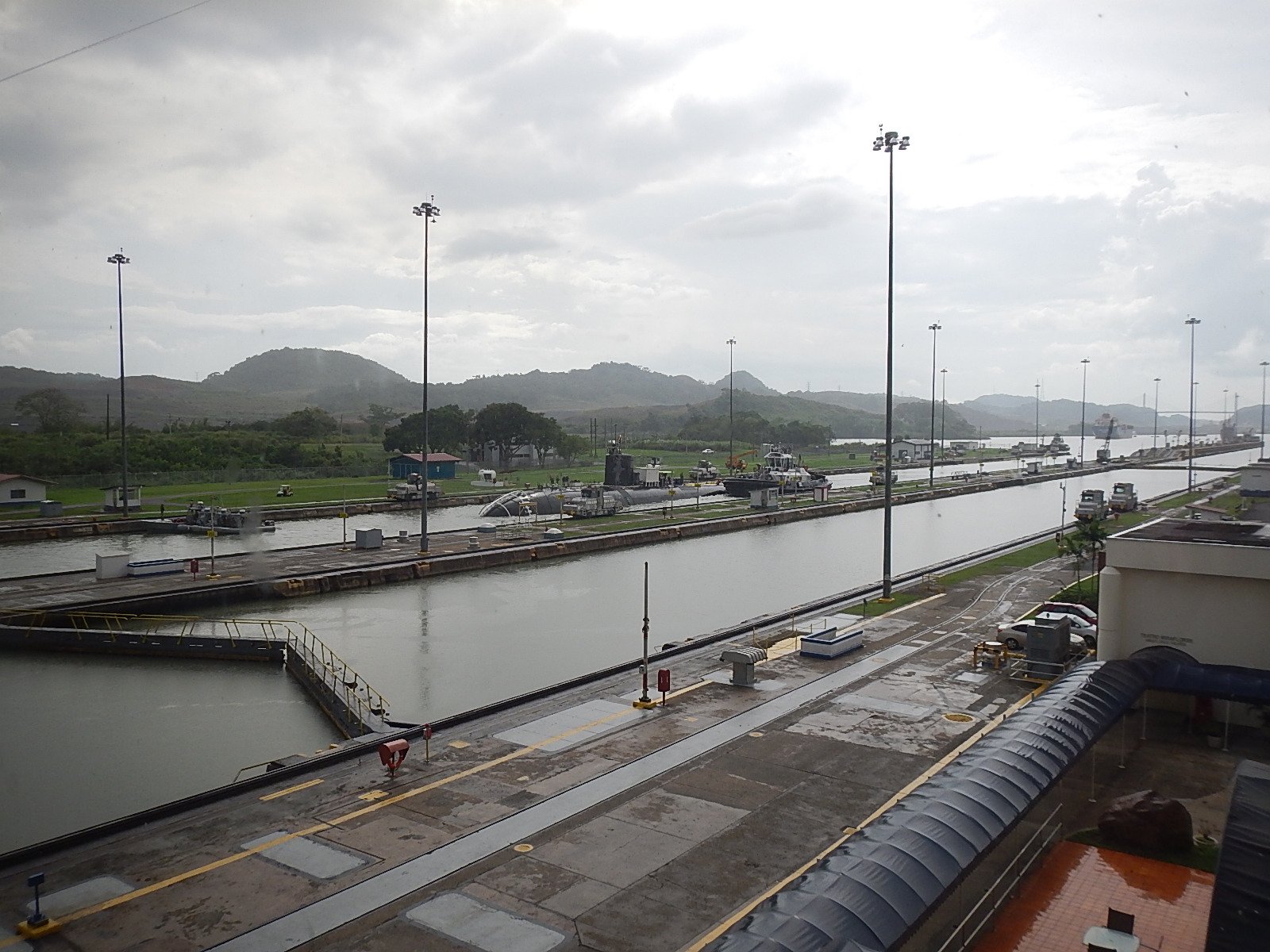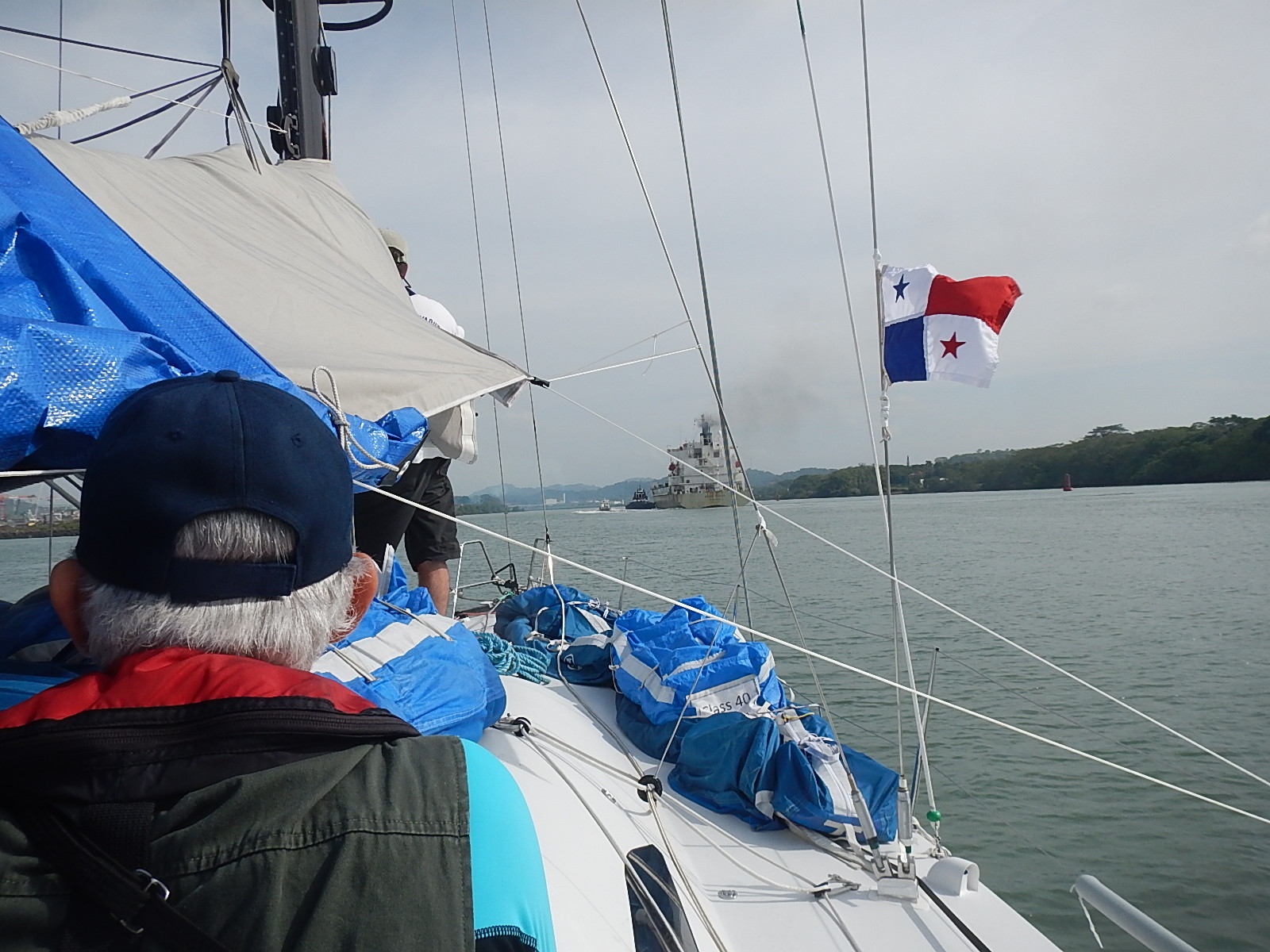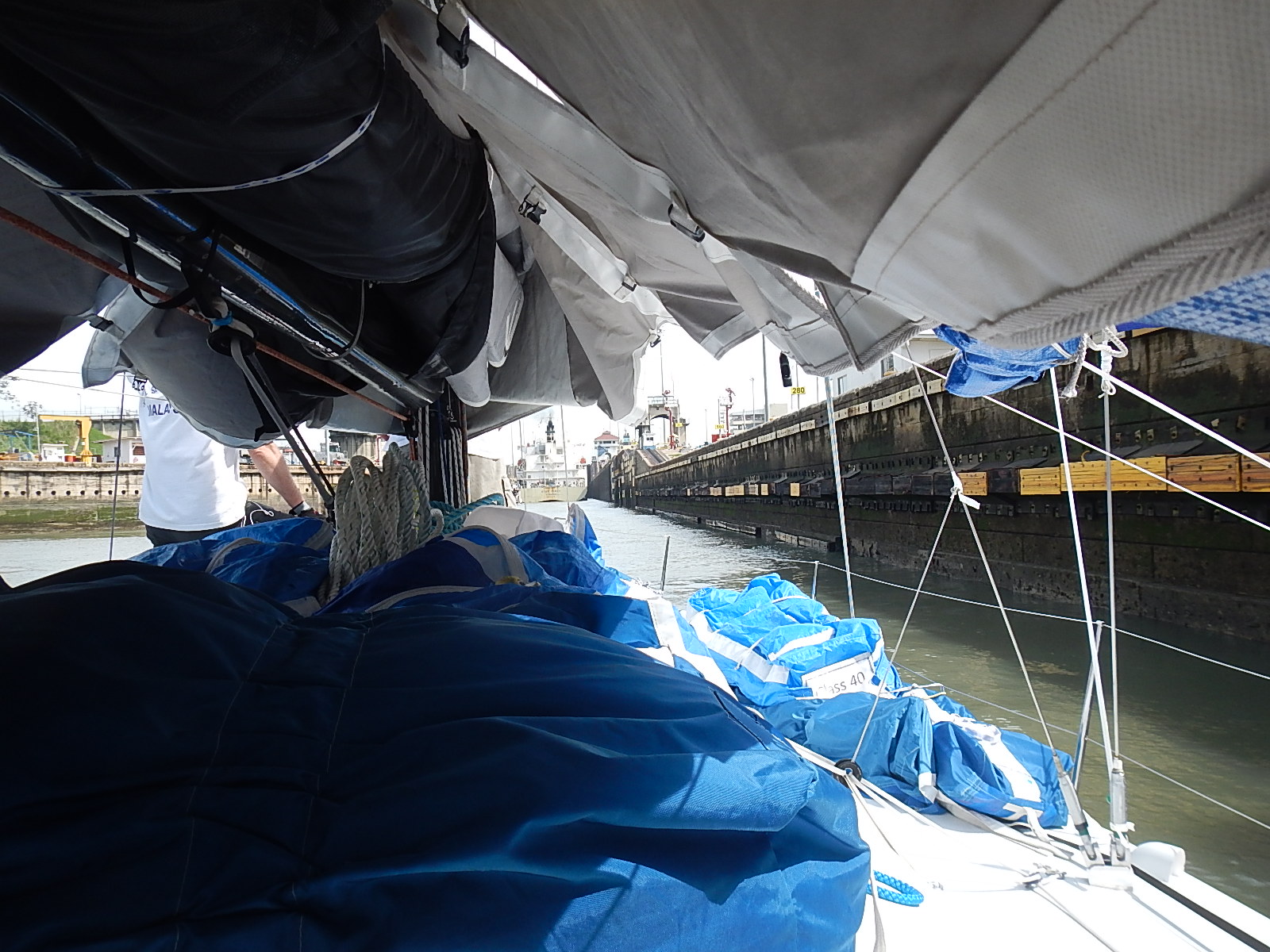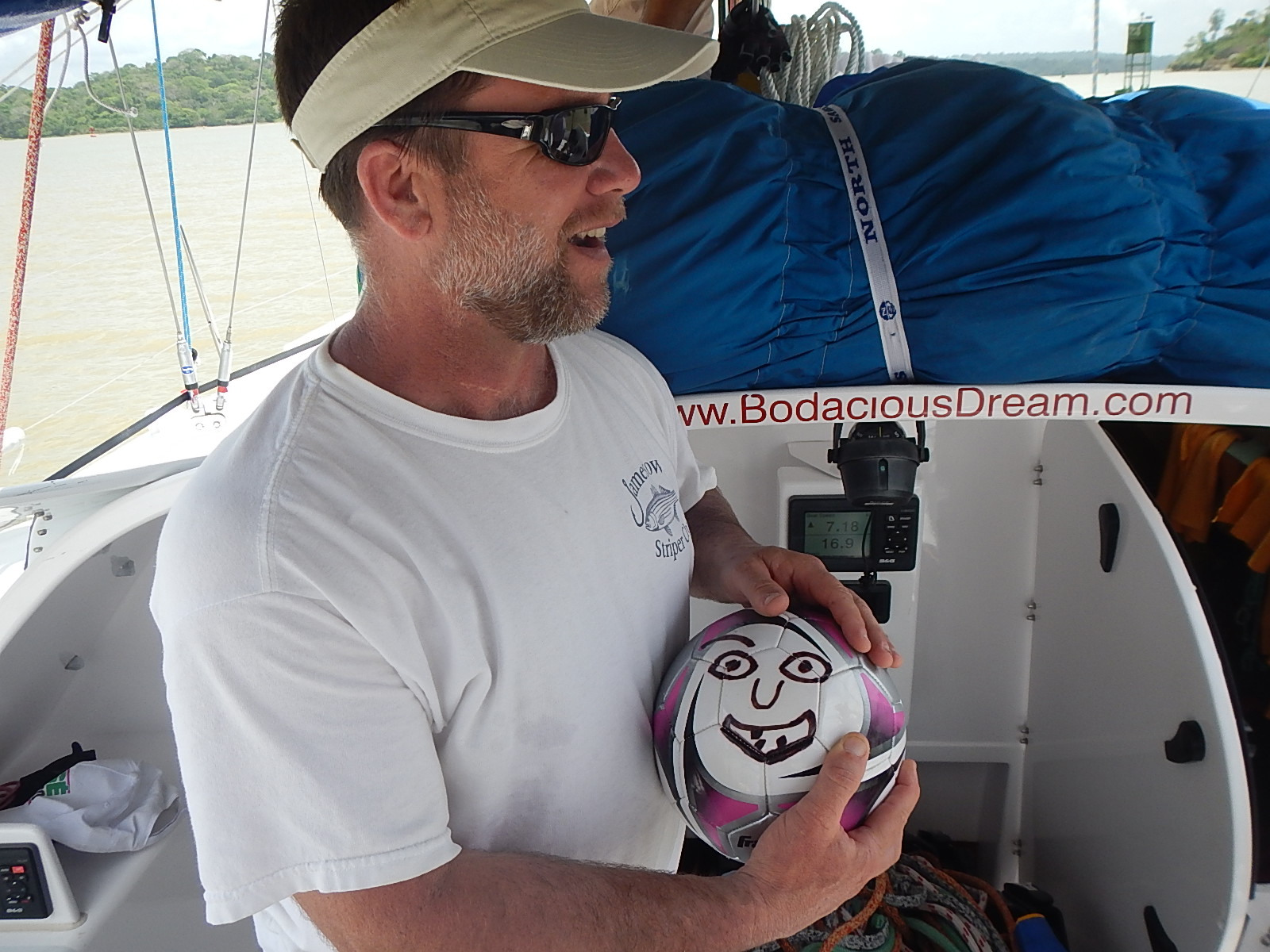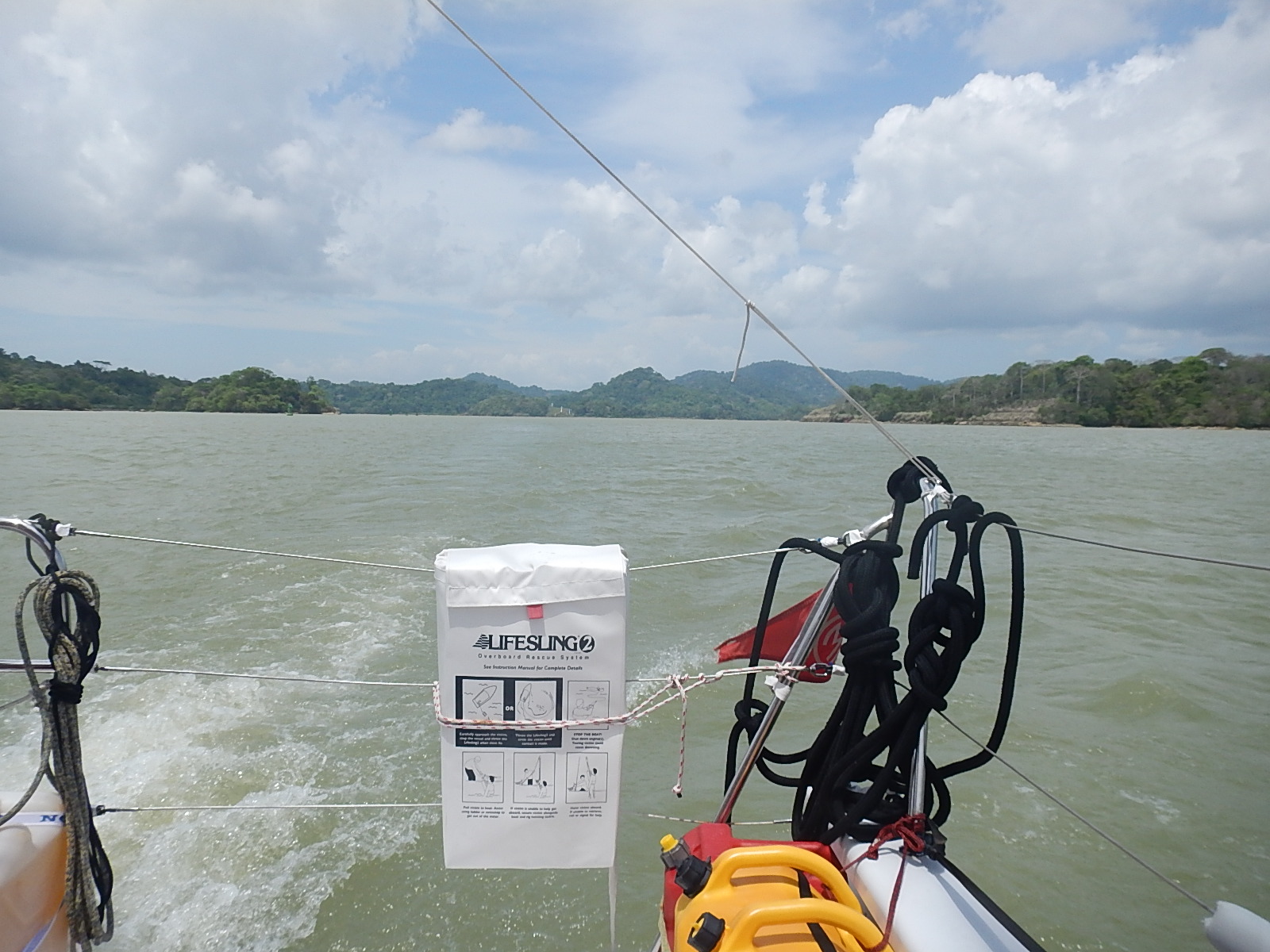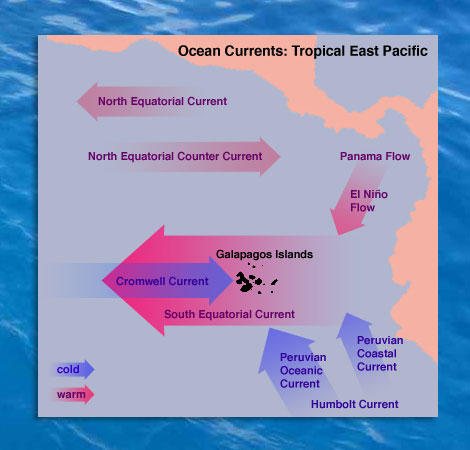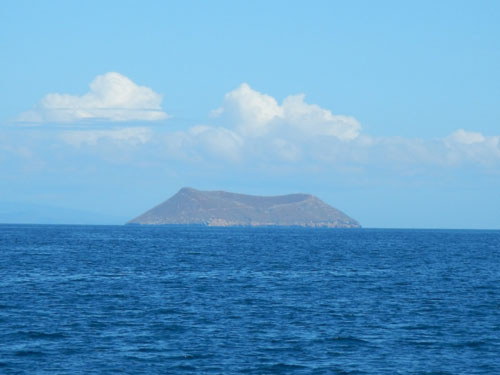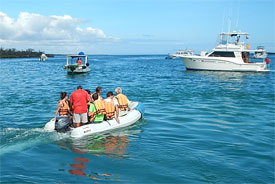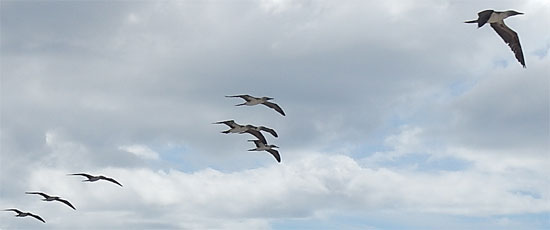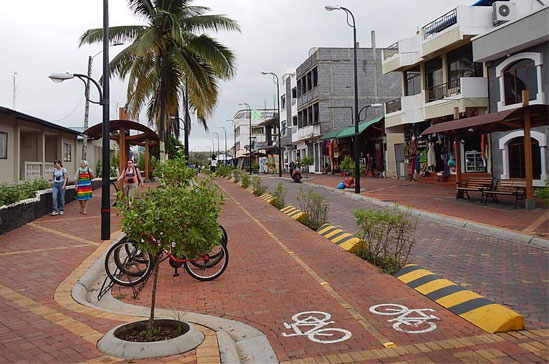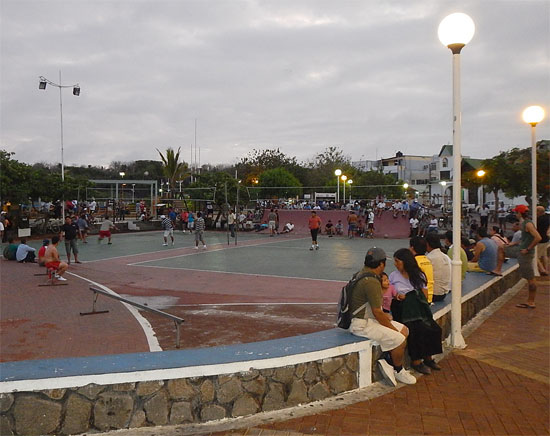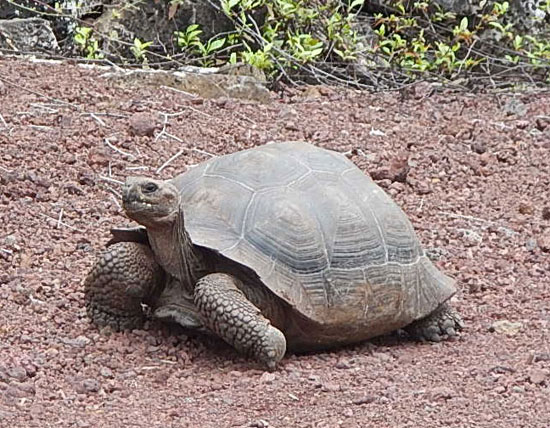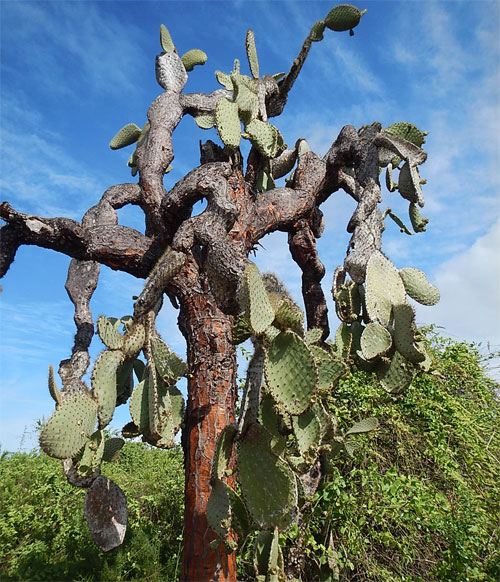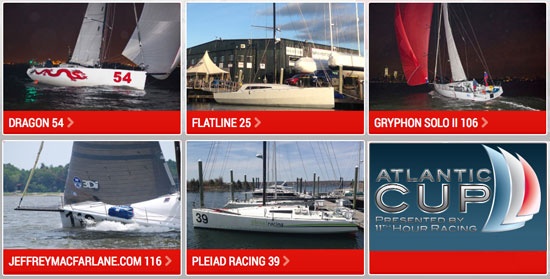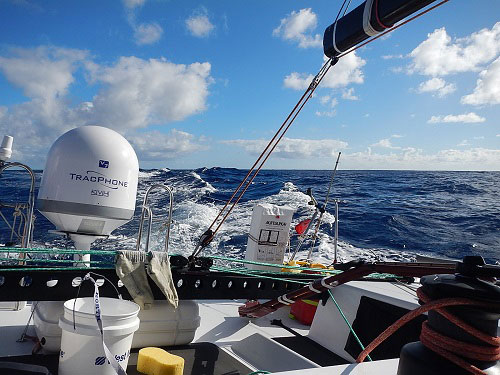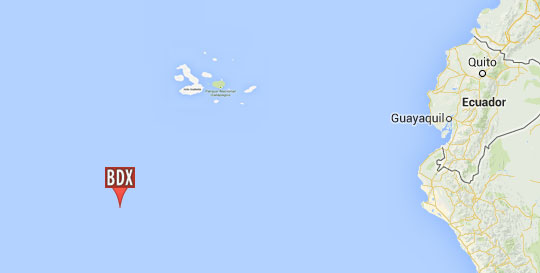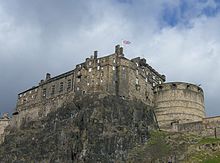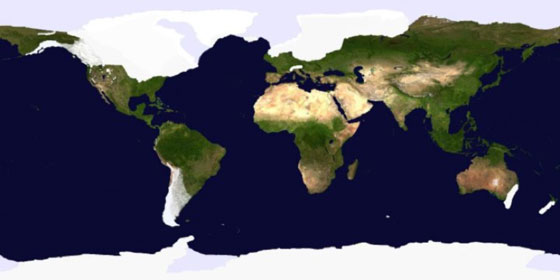Wow… what a day!! Saturday we watched the sun rise in the Pacific and set in the Atlantic! Across Central America we traveled, from the sea to shining sea all in about 12 hours… via the 48-mile Panama Canal of course!
Rob, Pierce, Joe, Bruce – my crew of trusted old friends who had traveled here to be my required crewmates for the crossing joined me Saturday morning at 5 AM CDT, so that we could pick up our pilot at 6:30 close to the Canal’s Pacific entrance. Tito, a local line handler recommended by our agent, Francis from the Panama Agency, also joined us. Tito had taken a night bus from the Atlantic side of the isthmus and was waiting for us at the boat when we arrived.
 Under the Pan-American bridge on the way to meet our convoy mates …
Under the Pan-American bridge on the way to meet our convoy mates …
We were soon loaded and ready-to-go, when we got a delay notice. We’d pick up the pilot at 7:30 instead of 6:30. But then, right at 7:30, the pilot boat approached and Raphael, our pilot, hopped onboard and began giving us our orientation on how we would proceed through the canal.
 Rafael (pictured to the right getting acquainted with Franklin) informed us we would be traveling through the first two sets of locks as a convoy with two other ships; one was a large (over 500 feet long) cargo ship from Singapore and the second, a smaller 95-foot passenger tour vessel named Islamorada, which by the way, originally belonged to the Chicago gangster Al Capone!
Rafael (pictured to the right getting acquainted with Franklin) informed us we would be traveling through the first two sets of locks as a convoy with two other ships; one was a large (over 500 feet long) cargo ship from Singapore and the second, a smaller 95-foot passenger tour vessel named Islamorada, which by the way, originally belonged to the Chicago gangster Al Capone!
With much anticipation, we proceeded slowly up the channel, en route to meet the “big” ship and Islamorada.

No question which of us was going to get the big bunk …
The term “lock” refers to these various sub-divisions of the canal through which you must pass. Each lock has chambers, which are like steps. So, the first lock (Miraflores) has two chambers. The big ship entered the chamber first, then Islamorada and then Bodacious Dream came in and tied alongside the Islamorada.

A bit of turbulence as the water floods in …
At that point, the gates closed and the chamber filled with 100 million liters (26.4 million gallons) of water, which had the effect of lifting all our vessels up to the level of the next chamber.
This process was repeated with the second chamber. There are two locks on the Pacific side; each with two chambers, which take you up to at 85 feet above sea level and release you into Lake Gatun – an artificial body of water in the middle of the isthmus. We then motored 21 miles across it. Once across it, we entered the single Pacific-side lock (which has three chambers) – which resulted in our descent to the Atlantic coast.

Joe keeping an eye on a long ship …
The canal is active 24 hours a day, during which time from 33 to 42 ships pass in both directions… every single day of the year! An astonishing volume of commerce and traffic from all around the world goes through these narrow 110-foot wide canals!
Every moment of the trip had us wide-eyed and excited as kids, as we watched the passing of huge freighters and listened to Raphael and Tito tell stories from some of their past trips. We also saw and heard about the construction for the new expansion of the canal which, when open in 2015, will allow much larger ships to make the passage.
 Bruce balancing as we motor across Lake Gatun …
Bruce balancing as we motor across Lake Gatun …
Our crossing of Lake Gatun in the middle of the trip also gave us a beautiful view of the interior of the country of Panama. We even saw a crocodile, though it took me too long to locate it in the camouflage to get a decent photograph of it!
Pushing as hard as we could to keep on schedule against an often strong wind, we were running 30 minutes behind in reaching our appointed time at the Atlantic side locks, but somehow Raphael and our agent Francis worked it out so that the authorities waited for us to arrive. At that point, we passed through and gently down the three chamber steps to where the final gates opened up at the level of the Atlantic Ocean, thus delivering Bodacious Dream back into her home waters, after six months of circumnavigating adventure.
There is SO much history in the 100 years of the operation of the canal that it’s hard to know just where you might start to tell the story. The displays at the Visitor’s Center Museum do a fine job of depicting the enormous task of cutting a channel through the country from one ocean to another, all the while being forced to invent new construction machinery and new engineering techniques to make that possible.
 One of the Wonders of the World … I believe it …
One of the Wonders of the World … I believe it …
The task at that time was so enormous and so full of unforeseeable challenges, that the greatest obstacle was lack of imagination, which could only be overcome by extending the reach of the builders’ imaginations into new and uncharted territory.
The US took over construction of the canal from France in 1904, and it would be a decade before it opened. From that time on, the U.S. was the administrator of the Canal Zone. In the late 1970’s, during President Jimmy Carter’s administration, a treaty was signed which turned operations of the canal over to the Panamanian government by the end of the century.
Since that time, Panama has operated the canal, maintaining it and making improvements to increase it capacities… including the new larger canal I mentioned, which will make it possible for more and larger ships to traverse the Isthmus. This has also spurred much new development and economic rejuvenation in Panama City and the surrounding areas, making Panama an increasingly attractive and popular travel destination. I was also surprised to learn that the Chinese were planning to construct a new competing canal passage through Nicaragua!
Well, as there’s quite a few more photos, we put together a few slideshows on the page here with photos of our day travelling through the Canal. You can also view it in a bigger format as a photo album on our BDX FACEBOOK page … http://on.fb.me/1lBIbz3
SLIDESHOW #1
SLIDESHOW #2
Now that we’re through, I’m collecting my thoughts and catching my breath, before I resume the final leg of this amazing circumnavigation later this week.
From all of us on Bodacious Dream… Joe, Rob, Pierce, Bruce, Tito, Raphael, and Franklin, who had some great fun rolling with all those new people… thanks for following along. Back soon with more!
– Dave
:: BDX Website :: Email List Sign-Up :: Explorer Guides :: BDX Facebook

